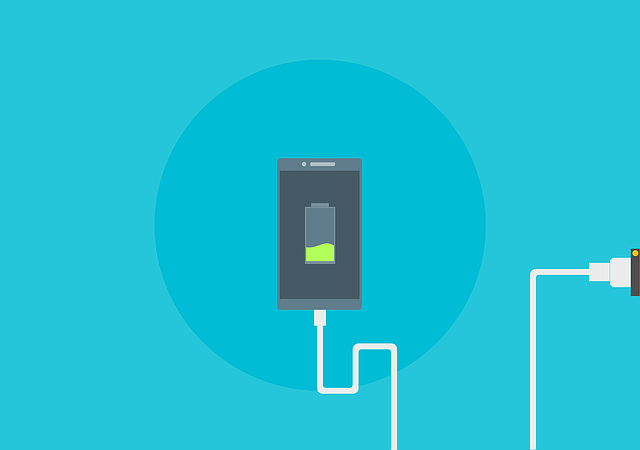Technology Innovation
Unveiling The Role of an Electrical Designer: Significance and Responsibilities

If you’ve ever pondered the masterminds behind the intricate electrical systems that empower our daily lives, look no further than an electrical designer. From the lighting in your home to the machinery in factories, these professionals play a pivotal role in ensuring the safe and efficient flow of electricity. In this article, we’ll dive into the world of electrical designers, exploring their responsibilities and the significance of their work. Brace yourself for a captivating journey into the realm of wires and circuits!
The Role and Responsibilities of an Electrical Designer
An electrical designer is an individual who crafts electrical components or systems for various applications. Their expertise is employed in industries such as automotive, aerospace, and telecommunications, where electrical engineering is essential. Leveraging their knowledge of physics and mathematics, electrical designers create designs that cater to the specific requirements of clients or employers.
In many cases, electrical designers develop prototypes of their designs to assess their viability and make necessary adjustments before proceeding with manufacturing. They may also oversee the production process and ensure that the final product meets all quality control standards.
The role of an electrical designer holds paramount importance in numerous industries, as they contribute their knowledge and expertise to the creation of secure and efficient electrical systems.
Skills and Knowledge Required for the Role
As an electrical designer, possessing a solid understanding of electrical theory and principles is vital. You should be adept at utilizing computer-aided design (CAD) software to develop accurate designs. Strong problem-solving skills are also crucial, as you’ll frequently encounter challenges related to existing designs that require troubleshooting.
Tools Utilized by Electrical Designers
Electrical designers are responsible for the layout, design, and supervision of all electrical components in a project. This encompasses power distribution, lighting, security, and communication systems. To fulfill their responsibilities effectively, electrical designers need to be familiar with a range of commonly used tools.
Key tools employed by electrical designers include computer-aided design (CAD) software, calculation programs, and simulation tools. CAD software enables the creation of two-dimensional (2D) and three-dimensional (3D) models of electrical components and systems, providing designers with a visualization of the final product’s appearance and functionality before construction begins.
Calculation programs assist in determining the sizing and specifications of electrical components based on project requirements. Simulation tools are employed to virtually test designs, ensuring their intended functionality before physical construction commences.
Additional tools utilized by electrical designers include survey equipment for gathering data about existing conditions on a job site, hand-held voltage testers for safe live wire testing, and cable trays for organizing and routing cables efficiently and securely.
With these tools at their disposal, electrical designers can bring even the most intricate projects to fruition.
The Crucial Role of Electrical Designers in the Manufacturing Industry
In the manufacturing industry, electrical designers hold the key to designing and developing electrical equipment, systems, and products. They create detailed drawings and specifications that outline the construction and operation of electrical components and systems. Electrical designers contribute their expertise to a wide range of sectors, including manufacturing, automotive, aerospace, computing, and telecommunications.
The significance of electrical designers in the manufacturing industry lies in their responsibility for designing electrical equipment crucial to the production process. Without their expertise, manufacturers would struggle to produce products efficiently and safely. Electrical designers collaborate closely with engineers to ensure that the designs they create can be manufactured correctly while meeting all safety requirements.
Challenges Faced by Electrical Designers
As an electrical designer, you’ll face various challenges while developing electrical layouts for diverse projects, ranging from commercial buildings to residential homes. Although this task may appear straightforward, several obstacles may arise along the way.
One of the primary challenges lies in meeting the required safety standards for your design, particularly when working on projects intended for public use. Adhering to numerous safety standards ensures the well-being of individuals utilizing the space.
Efficiency is another key challenge. It entails considering factors such as energy usage and lighting requirements. Additionally, your design should accommodate potential future changes or upgrades that may be necessary.
Working within a budget poses another hurdle. Balancing cost savings without compromising quality or functionality can be a demanding task. Striking the right balance is essential, aiming to create a space that is both functional and cost-effective.
Tips for Success as an Electrical Designer
To thrive as an electrical designer, there are a few fundamental aspects to focus on. Firstly, a strong grasp of the basics of electricity and its workings is crucial. This forms a solid foundation for designing electrical systems. Familiarity with industry standards and codes governing electrical design is also beneficial. This ensures that your designs adhere to safety and code requirements. Keeping up with advancements in electrical engineering and staying abreast of new technologies will aid in creating innovative and cutting-edge designs.
Conclusion
Embarking on a career as an electrical designer presents an exciting opportunity to make a significant impact in the realm of electrical engineering and technology. Through this role, you contribute to the creation of innovative solutions that power our homes and businesses, enhancing convenience for all. Not only do you pioneer new designs and technologies, but you also bolster safety measures in residential and commercial settings. If you seek a thrilling career with ample growth prospects, becoming an electrical designer might be the ideal path for you!























